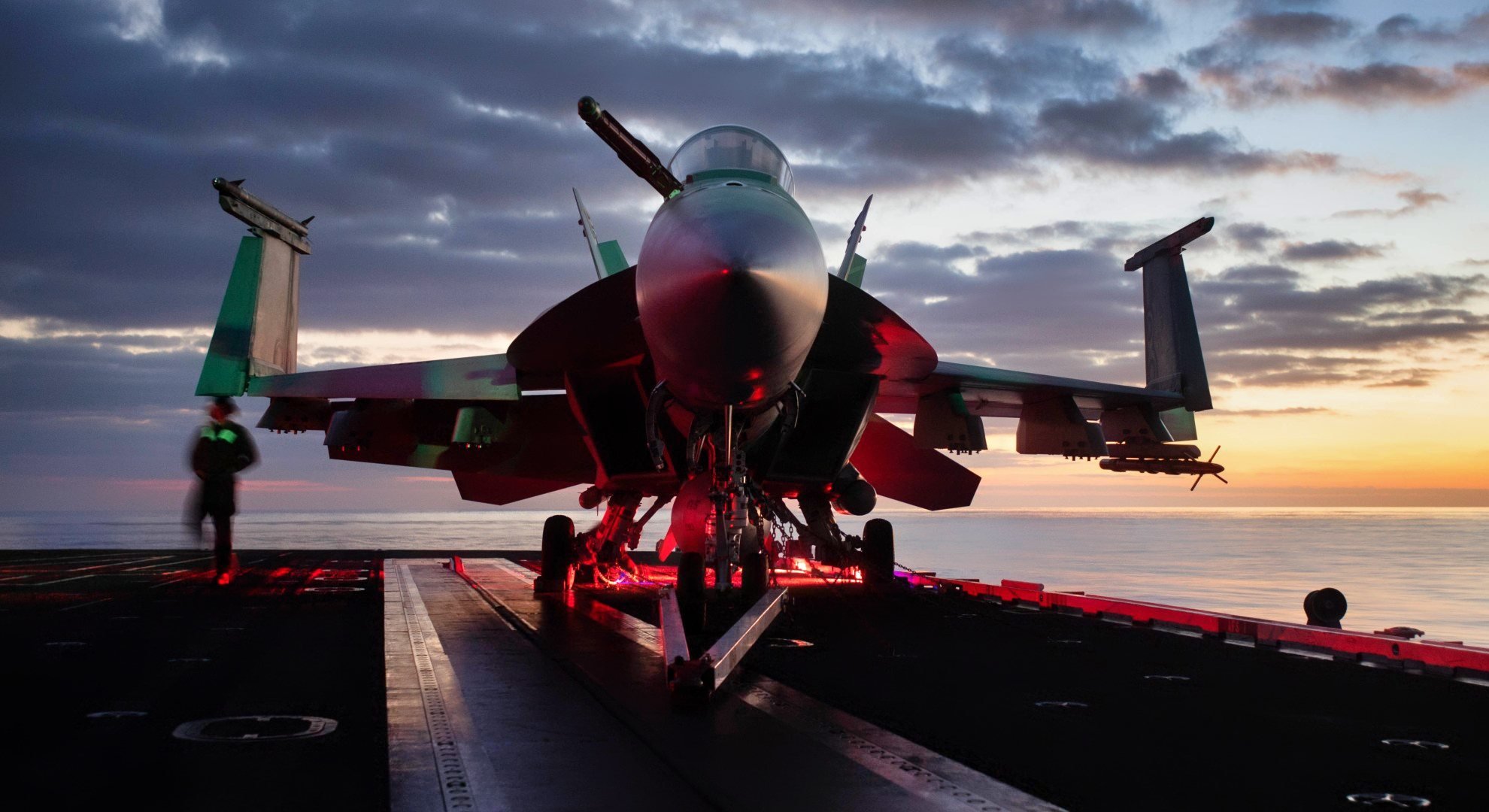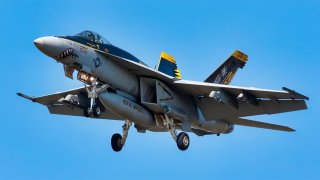The U.S. Navy Just Can’t Quit the F/A-18 Super Hornet
The U.S. Navy continues to invest in the Boeing F/A-18 Super Hornet, recently awarding a $1.3 billion contract for 17 new Block III aircraft, despite the plane being a fourth-generation warplane and surpassed by fifth-generation fighters like the F-35 Lightning II.
Summary: The U.S. Navy continues to invest in the Boeing F/A-18 Super Hornet, recently awarding a $1.3 billion contract for 17 new Block III aircraft, despite the plane being a fourth-generation warplane and surpassed by fifth-generation fighters like the F-35 Lightning II.
-The Super Hornet, which is a mainstay of carrier air wings, offers improvements in fuel capacity and mission range over its predecessors and is equipped with advanced armaments.
-However, questions remain about the Navy's strategic decision to further invest in the Super Hornet when newer technologies and more capable aircraft like the F-35 are available, suggesting a potential misalignment with modern air combat demands.
Why is the U.S. Navy Still Buying F/A-18s When the F-35 Outclasses It?
The Boeing F/A-18 Block III Super Hornet was “built for air superiority,” according to the Boeing website. For years since the retirement of the F-14 Tomcat, the Super Hornet has been the backbone of the US Navy’s aircraft carrier airwing.
These warbirds were made famous in the original Dean Devlin and Roland Emmerich 1996 summer blockbuster film, Independence Day. In that iconic film, Will Smith and Harry Connick, Jr.’s Marine Corps fighter pilot characters defended the Earth from aliens while piloting a pair of Hornets.
Today, the Navy argues that the F/A-18 Super Hornets remain among the most affordable, advanced warplanes in the American arsenal today. Of course, it must be noted that the Super Hornets are no longer the pinnacle of air superiority warplanes. That honor goes to fifth-generation warplanes (notably the F-22A Raptor but also the F-35 Lightning II). The Navy does not have a version of the F-22 (sadly). But it does have a significant investment in the F-35.
So why is the Navy still spending vast sums of money on the Super Hornet when it should be building up its F-35 capabilities, since that warbird is the plane of the future?
F/A-18 Super Hornet: Basic Specs
The F/A-18 Super Hornet Block III comes in two subtypes of planes. A single-seater, E model and a two-seater F model. On March 19 of this year, the US Navy awarded Boeing a contract worth $1.3 billion to deliver 17 new Block IIIs between winter 2026 and late 2027. The F/A-18 E and F models are upgrades of the F-18 C and D variants.
The F/A-18 E and F models have an airframe that is 20 percent larger than its predecessors. It’s 7,000 pounds heavier when flying empty and 15,000 heavier when flying with a full load onboard compared to the F-18 C and D variants. The F/A-18 Super Hornets carry 33 percent more fuel than the older version of the warplane, too. This has increased the mission range of the birds by a staggering 41 percent and the endurance levels of the bird by 50 percent than the past variants.
Overall, the F-18 program was considered an unparalleled success.
After all, it not only met all the military’s program requirements, but it came in 400 pounds underweight. And this warbird is truly amazing. So, please, don’t take the tone of this piece and denigrating the incredible service record of the F/A-18. It’s just that there are now newer, better planes with far more capabilities than the F/A-18.
The F/A-18 Super Hornets can reach a top cruising speed of Mach 1.7. These birds have a range of 1,467 miles. Their armaments include a single M61A1/A2 cannon. These warplanes carry AIM-9 sidewinders, AIM-9X missiles, AIM-7 Sparrows, AIM-120 AMRAAM missiles, they can also carry Harpoon, Harm, SLAM, SLAM-ER, and Maverick missiles. Beyond these systems, these birds can fly with stand-off weapons and Joint-Direct Attack munitions. As featured in the Harrison Ford classic film (based on the Tom Clancy book), Clear and Present Danger, all versions of this bird can drop laser-guided munitions.
Australia and Kuwait are major foreign purchases of the Super Hornet.
Why Did the Navy Purchase More F/A-18 Super Hornets?
Along with this new batch of F/A-18s comes “critical technical data” that the US Navy’s leadership believes will ensure that the Super Hornet continues providing “significant combat capability into the 2040s.” It seems strange that the F/A-18 Super Hornet would continue to be a predominant actor in an aircraft carrier’s airwing. After all, the US Navy has made significant investments in the carrier version of the F-35 Lightning II.
According to many reports, the 17 Block IIIs are to be the final tranche of F/A-18 Super Hornets that the Navy purchases, because their price has increased. Nevertheless, the Navy, like the other branches of the United States Armed Forces, clearly has no idea what it wants, what systems it needs, and why it might need those systems. The creation of mixed fleets of fourth-generation warplanes, such as the Super Hornets, along with the F-35s is bizarre.

Yes, mission sets could be developed for these birds simultaneously but why the redundancy? Unlike the Air Force battle to cancel the beloved A-10 Warthog to fund more of their versions of the F-35, the F/A-18 Super Hornet is a less capable version of the F-35.
Boeing and the Navy insist that they have made these newer Block IIIs more sophisticated than the older models of F/A-18s. But they are still just fourth-generation warplanes. The inherent limitations, therefore, of the F/A-18 will be apparent when these warbirds have to go up against fifth-generation warplanes belonging to rival states, such as China or Russia.
Yet, the Navy just blew $1.3 billion on these birds that won’t be ready for use for another two years.
The Navy Should Focus on the F-35, Not the F/A-18
In every conceivable way, the F-35 outperforms the F/A-18. What’s more, the F-35 would be able to better establish air dominance over rival militaries than could the Super Hornets. Of course, the greatest investment for the Navy would have been to build an aircraft carrier version of the F-22A Raptor.
Alas, the Navy’s short-sighted planners opted to dither, continue purchasing the F/A-18—knowing these systems were going the way of the dodo bird—and then ultimately deciding to play catch-up with the Air Force in 2001, by purchasing their first block of carrier-based F-35s. There’s no doubt the F/A-18 program has been a giant success for the military. Yet, the continual investment in and augmentation of these birds risks undermining combat readiness, as the Navy needs more fifth-generation warplanes on its carriers and less fourth-generation planes.
About the Author
Brandon J. Weichert, a National Interest national security analyst, is a former Congressional staffer and geopolitical analyst who is a contributor at The Washington Times, the Asia Times, and The-Pipeline. He is the author of Winning Space: How America Remains a Superpower, Biohacked: China’s Race to Control Life, and The Shadow War: Iran’s Quest for Supremacy. His next book, A Disaster of Our Own Making: How the West Lost Ukraine, is due October 22 from Encounter Books. Weichert can be followed via Twitter @WeTheBrandon.


